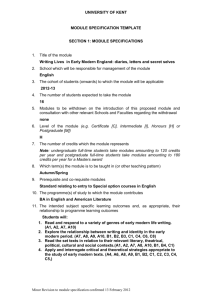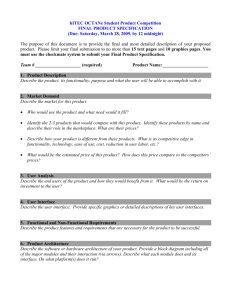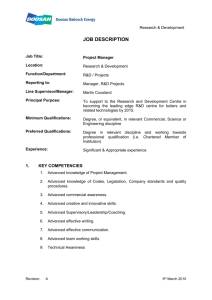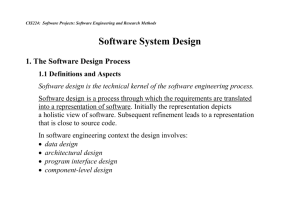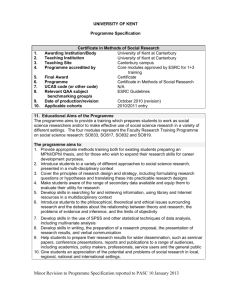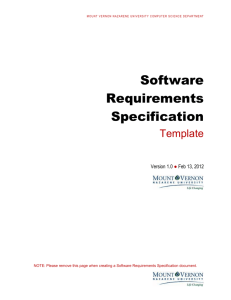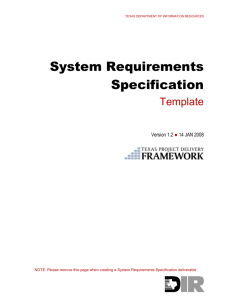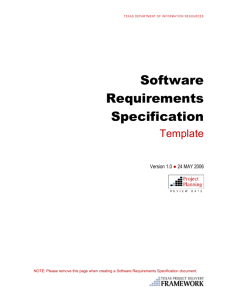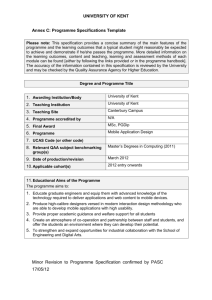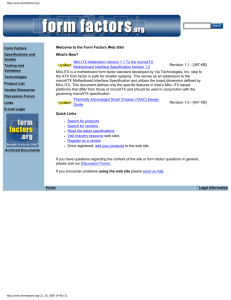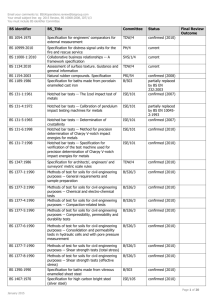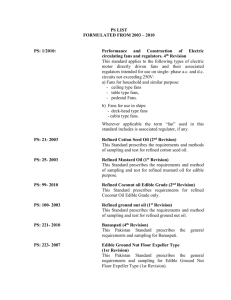UNIVERSITY OF KENT –MODULE SPECIFICATION
advertisement
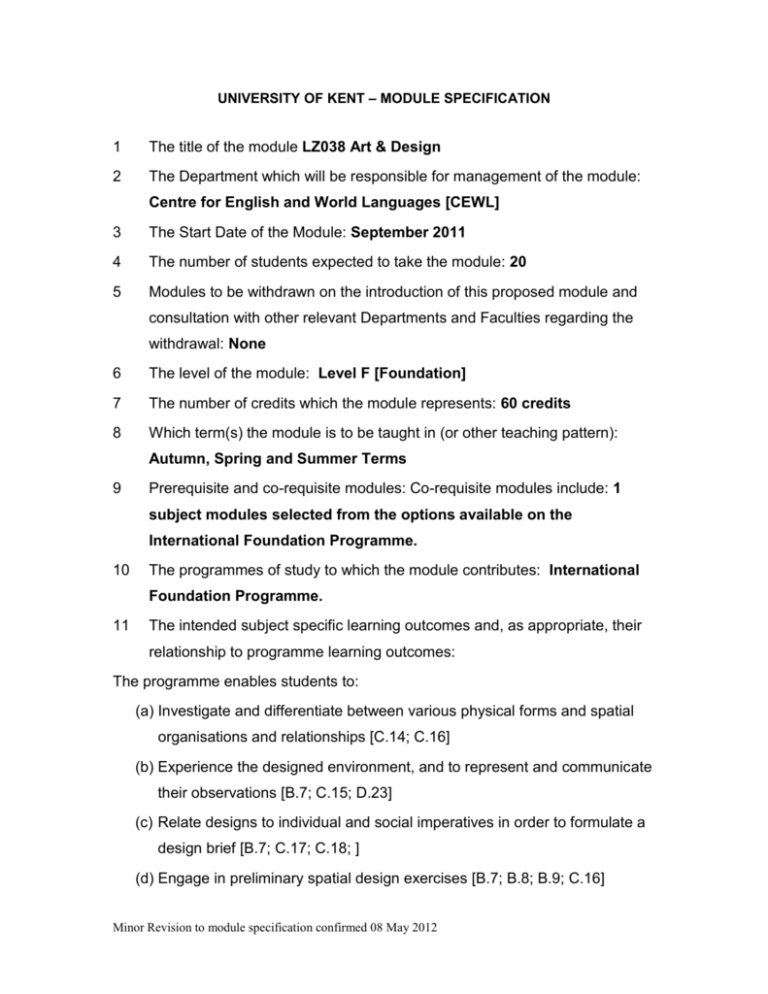
UNIVERSITY OF KENT – MODULE SPECIFICATION 1 The title of the module LZ038 Art & Design 2 The Department which will be responsible for management of the module: Centre for English and World Languages [CEWL] 3 The Start Date of the Module: September 2011 4 The number of students expected to take the module: 20 5 Modules to be withdrawn on the introduction of this proposed module and consultation with other relevant Departments and Faculties regarding the withdrawal: None 6 The level of the module: Level F [Foundation] 7 The number of credits which the module represents: 60 credits 8 Which term(s) the module is to be taught in (or other teaching pattern): Autumn, Spring and Summer Terms 9 Prerequisite and co-requisite modules: Co-requisite modules include: 1 subject modules selected from the options available on the International Foundation Programme. 10 The programmes of study to which the module contributes: International Foundation Programme. 11 The intended subject specific learning outcomes and, as appropriate, their relationship to programme learning outcomes: The programme enables students to: (a) Investigate and differentiate between various physical forms and spatial organisations and relationships [C.14; C.16] (b) Experience the designed environment, and to represent and communicate their observations [B.7; C.15; D.23] (c) Relate designs to individual and social imperatives in order to formulate a design brief [B.7; C.17; C.18; ] (d) Engage in preliminary spatial design exercises [B.7; B.8; B.9; C.16] Minor Revision to module specification confirmed 08 May 2012 12 The intended generic learning outcomes and, as appropriate, their relationship to programme learning outcomes: The programme enables students to: (a) Organise time efficiently, productively and meet given deadlines [D.24] (b) Work independently [D.24] (c) Communicate and comment on an individual design proposition [A3; B.7; B.8; C.18; D.23] (d) Criticise work at a fundamental level [A.3; B.9; C.16; C.18; D.23] (e) Communicate clearly in English on design matters [A.3; B.7; B.8; B.9; C.16; C.17; C.18; D.20; D.23; D.25]] 13 A synopsis of the curriculum This module provides students with an introduction to elementary spatial design theory and practice. It prepares students for Stage One entry into degree courses in architecture, interior design and interior architecture, in addition to associated areas of design study. Key curriculum areas: Observation (how to read spatial environments) Making (basic principles of construction of objects and environments) Recording & communication (skills in freehand drawing, basic workshop techniques for making maquettes, and photography) Formal manipulation through design projects (scale, the user, synthesis of competing demands) 14 Basic principles of design history Brief making and questioning Field trip Indicative Reading List Rasmussen, Steen Eiler, Experiencing Architecture (Cambridge, Mass: MIT, 1962) Minor Revision to module specification confirmed 08 May 2012 Ching, Francis, Architecture: Form.Space& Order (London: Wiley, 1995) Risebero, Bill, The Story of Western Architecture (London : Herbert, 2001) 15 Learning and Teaching Methods, including the nature and number of contact hours and the total study hours which will be expected of students, and how these relate to achievement of the intended learning outcomes: (a) Using a combination of formal and informal teaching, contact time will be used to introduce key theoretical concepts, as well as discuss, demonstrate and provide practical activities aimed at introducing and developing a variety of skills. Guided self-study work and practice will be used to further enhance practical skills. The aim of this work is to make students confident to initiate, research, experiment with, develop and communicate design proposals. The exercises provided give students practical tasks to perform; these gradually widen their understanding of spatial design. (b) As a 60-credit module with a significant skills-based component, students are expected to attend 7 hours of seminar, lecture & architecture workshop sessions per week over 19 weeks and complete 15.5 hours of private study per week over 30 weeks, a total of 133 hours of seminar, lecture & workshop sessions and a total of 467 hours of private study. (Total 600 hours) (c) 5 six week time periods, spread over 30 weeks , comprising the following subject areas: i.History/theory and construction/manufacture. ii.Observation and documentation. iii.Systems of communication: drawings, scale, model making, photography. iv.Design project Minor Revision to module specification confirmed 08 May 2012 16 Assessment methods and how these relate to testing achievement of the intended learning outcomes. Students must pass all components of the foundation programme with 60% overall and 60% in the Design Module. Assessment Assessment Details Project 1 Observation/ Drawing /Presentation Series of observations measurements and sketches compiled between weeks 1-6 Series of observations measurements and sketches compiled between weeks 7-10 Compilation of design proposals, models and a final object between weeks 13 and 18. Final result is a working container Compilation of design proposals, models and a final object between weeks 19 and 23. Final result is a chair 1200 words, plus illustrations, on a feature of the built environment Portfolio including four items: Review of projects 1-4 Studio work/drawings Personal work/Drawings Project 2 Observation/ Drawing/Presentation Project 3 Brief making / design / presentation Project 4 Brief making/ design/ presentation Illustrated written report Portfolio 15-20 minute (oral) Portfolio presentation Relationship to learning outcomes on page 1 a, b, e, f Weight a, c, d, e, f 15% a, b, e, f, g 20% a, b, c, d, e, f 25% b,c,e,f,g,h,i 15% e,g,h 15% Minor Revision to module specification confirmed 08 May 2012 10% 2 pieces of short written work 17 Implications for learning resources, including staff, library, IT and space: No additional library or IT resources required. Studio space will be provided by School of Architecture, and timetabled jointly. CEWL will provide the teaching staff in consultation with the School of Architecture. 18 A statement confirming that, as far as can be reasonably anticipated, the curriculum, learning and teaching methods and forms of assessment do not present any non-justifiable disadvantage to students with disabilities. The department recognises and has embedded the expectations of SENDA, and supports students with a declared disability or special (educational) need in its teaching, through the establishment of Inclusive Learning Plans agreed between student, department and the Disability Support Unit. We liaise with the Disability Support Unit in order to provide specialist support where needed. Field trips will be organised with the needs of any disabled students in mind. 19 A statement confirming that, as far as can be reasonably anticipated, the curriculum, learning and teaching methods and forms of assessment do not present any non-justifiable disadvantage to students with disabilities. Statement by the Director of Learning and Teaching: "I confirm I have been consulted on the above module proposal and have given advice on the correct procedures and required content of module proposals" ................................................................ .............................................. Director of Learning and Teaching Date Statement by the Head of Department: "I confirm that the Department has approved the introduction of the module and will be responsible for its resourcing" Minor Revision to module specification confirmed 08 May 2012 ................................................................. .............................................. Head of Department Date Minor Revision to module specification confirmed 08 May 2012
